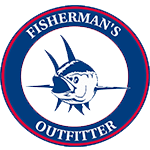
Shimano Fishing Rods & Reels
November 14, 2013How to Catch Codfish
December 6, 2013Transcription
John Maher: Hi, I’m John Maher. Today, I’m here with Joe Curcuru, manager of Fisherman’s Outfitter in Gloucester, Massachusetts. Today, we’re talking about custom fishing rods. Welcome, Joe.
Joe Curcuru: Thank you for having me here today, John.
John: Sure. Joe, what are the differences between custom rods and brand name production rods?
Joe: With a custom rod, you’re paying a lot more attention to detail. They’re handmade, whereas a production rod is built by a machine, and there’s no real oversight. They’re all mass?produced to keep cost down and that sort of thing, whereas a custom rod is built to your standards, whatever you’re looking for.
John: OK. What are the different types of rods and what types of fish do you go after with these different types of rods?
Joe: These countless types of rods. You could build a million different rods and use them for every different application. It all really depends on what type of fishing you’re doing, and that’s what we base off how we build your rod. We can do any type of combination. Whereas, you don’t want to put a trolling rod with a spinning reel.
John: What’s the difference? Say, you’re doing trolling, what type of rod do you need for that?
Joe: When you’re trolling, you generally want to have a shorter, stiffer rod that sits in a rod older. Generally having a notched gimbal, so it can lock into the bottom of the rod holder, so you don’t end up losing the rod overboard. Whereas, a light spinning rod, you want to keep it as light as possible to keep the weight down.
John: Does it tend to be longer and more flexible?
Joe: The spinning rods generally are longer, more flexible, Because you’re using lighter lines and casting, you need to have a lot more flex to launch the lure.
John: So it’s not just a one?size?fits?all kind of thing. Depending on what kind of fish you’re going after, you want to try to get a rod and reel combination that really targets that particular type of fish.
Joe: Absolutely. Whenever you’re looking to get a combination for yourself, you should either do your homework or call a specialized shop like ourselves and discuss what you’re planning on doing. That’s how we, basically, build our rods.
John: When you’re building the rods, what are the different components that you use?
Joe: To start with a rod, you basically have your blank, which is the actual rod itself. Then you have all your different components. At the bottom, you have your grips. Some of them may have an aluminum bent butt, or just a regular straight cork or foam EVA?type of butt section.
Then you have, obviously, your reel seat, where the reel locks into.
John: On the butts, what do you use a bent butt rod for?
Joe: Well, a bent butt would either be used in a fighting chair or fishing out of a rod holder, that sort of thing. Mostly offshore, or some guys, especially that travel a lot, need to have a real short rod. They can use the aluminum butt, because they detach off the rod, so they break down for a smaller size for travel.
John: What advantage does the bent butt have?
Joe: It’s a lot stronger than a normal butt, and also having the bent section gives you more leverage and puts more pressure on the fish.
John: Alright, /moving up from there, you mentioned the reel seat?
Joe: The reel seat? Your aluminum butts basically have the reel seat built into them. But if you’re building, say, a spinning rod, you generally want to have a lighter material, so that you have usually a graphite reel seat with aluminum or stainless hoods. Or you could have aluminum ones. There are so many different variations for just the reel seat alone. You need these different colors if you want to match the colors of your boat or the colors of your truck, whatever you want to do.
John: Are there any other components as you go further up?
Joe: Yup. As you go up, you obviously have your grip where your hand sits when you fight the fish, and we could do many different materials, different shapes. It all depends on what type of fishing you’re doing. On a trolling rod, you generally want to have a longer 14 to 16?inch fore grip so you can reach up on the rod and still be comfortable, whereas a shorter spinning rod you want to have it small because you’re not putting your hand way up on the rod. That’s where the action is.
John: I know there’s the little eyes that the line goes through. Are those different depending on the type of rod as well?
Joe: There’s thousands and thousands of different types of guides. There’s your simple, just wire. That’s probably the most basic thing there is, and then you get into the different types of rings. There’s all sorts of different materials that’ll reduce abrasion on your line. Then you have the ultimate ones which are sealed ball bearing actual rollers that look like pulleys. That completely reduces the friction, and that’s what you need on the big heavy?duty trolling reels.
John: If somebody is interested in getting a custom rod, what’s the place that they should start?
Joe: The best thing they should do is give us a call, tell us what their application is going to be, what they’re targeting, how they’re going to be targeting them. Then we can go from there. Then basically just it depends on what your budget is. You could get crazy and spend a couple thousand dollars on a rod, but we, basically, want to get you what you need.
John: Joe, thanks very much for talking with me.
Joe: Thanks very much, John.
John: For more information you can visit fishermansoutfitter.com or call Joe at 1?800?500?TUNA. That’s 1?800?500?TUNA.
